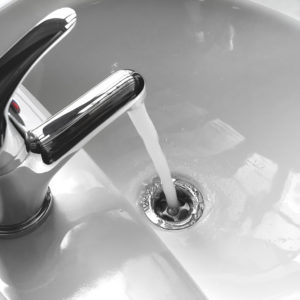The Environmental Protection Agency has set its sights on regulating the “forever chemicals” that have been turning up in drinking water throughout the country. These chemicals are the tip of the iceberg regarding the problems in America’s tap water system.
Per- and polyfluoroalkyl substances (PFAS), a group of chemicals common in nonstick coating, fire retardants and other waterproof materials, may soon be regulated as a group rather than as individual chemicals in drinking water. The EPA announced that it would reduce the advisory threshold for a few specific PFAS chemicals to limits as low as 0.02 parts per trillion.
There are 4,700 PFAS chemicals — so regulating PFAS as a group, rather than targeting each individual compound, is a smarter way to do it.
The journal Hypertension recently revealed that PFAS causes high blood pressure in women. Many other studies have found evidence tying PFAS to other health consequences, including thyroid diseases and testicular and kidney cancers.
But even when these chemicals are regulated, it doesn’t mean they are kept out of your tap water. It only means that consumers will be notified when PFAS are present in their water. Added transparency is essential, but it is far from a solution.
PFAS aren’t easy to get rid of. They were called “forever chemicals” because they don’t break down in the environment — or in your drinking water. There are filtration methods that can be used to purify water, but they are not widely used in municipal systems and they are not cheap.
The International Bottled Water Association has set a maximum threshold for its members well below the EPA’s previous regulation. However, the American Chemistry Council has warned that most cities are not equipped to reduce drastically PFAS levels in their systems as in the private sector.
The ultimate solution to the PFAS problem remains unclear, but the government is taking a step in the right direction by acknowledging the problem. Much more could be done to address other issues in the tap water supply.
Many states do not even require testing for lead in school drinking fountains. And those that do have struggled to address the problem.
Montana, for example, recently implemented a testing requirement and found that half of the schools that had completed testing found dangerous levels of lead in school drinking fountains. Lead exposure can cause developmental delays in children. No amount of lead exposure is safe.
Additionally, schools throughout the country have struggled with crumbling infrastructure. Burst water mains are one of the leading causes of water contamination and subsequent boil water advisories. According to the database IsTapWaterSafe.com, more than 375 boil water advisories were reported from January to June in the United States.
The CDC advises using bottled water for all food preparation during boil water advisories. Given that school water bottle stockpiles are uncommon, boil water advisories often result in school closures. Most recently, school programs had to be halted in Wichita, Kansas, after the city was placed under an advisory due to a water treatment system failure
This problem is exacerbated because some schools — and, more recently, cities — have begun banning bottled water. Instead of encouraging recycling, schools have forbidden plastic bottles altogether, leaving children with no option but to fill up a (likely unwashed) reusable water bottle with tap water from a shared drinking fountain.
From boil water advisories to PFAS and lead contamination, our tap water system leaves much to be desired. The steps taken to increase transparency in PFAS are commendable, but much work is needed to ensure Americans have access to the purified water they need to live healthy lives.


